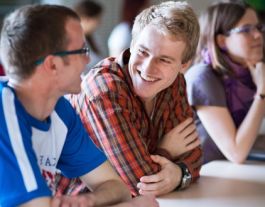Analytics, Demography, Education and Science, Latvia, Society
International Internet Magazine. Baltic States news & analytics
Friday, 19.04.2024, 23:17
Number of youth in Latvia decreases by 5.7% annually
 Print version
Print version |
|---|
172 thousand children attended primary schools in the academic year 2014/2015. After graduating from primary school, 61.3% continued studies in secondary school, 33.8% chose to continue their studies in vocational education institutions, and 4.9% discontinued their studies.
37 thousand school students attended secondary schools in Latvia in the academic year 2014/ 2015. In 2014, 63.8% of secondary school graduates continued their studies in universities and colleges, and 7.3% - in vocational education institutions. In 2014 the share of youth who discontinued their studies after secondary school graduation decreased to 28.9% (in 2010 - 36.9%).
29 137 first-year students were enrolled in universities and colleges in the academic year 2014/2015, of them 24 135 - in undergraduate studies. As compared to the previous year the number of enrolled students decreased by 7%. Over the last decade the number of students has been decreasing. The largest drop in the number of enrolled students was witnessed in the academic year 2009/2010, when the number of first-year students as compared to the previous period declined by 10 048 persons or 24.2%.
During the pre-crisis period in the academic year 2007/2008, 25% of the university and college students were studying for state and local government budget funding, and 75% - for personal funding. In recent years this proportion has changed - in the academic year 2014/ 2015, 40% of the students received state or local government funding, and 60% were studying for personal funding.
In 2014, 40.4% of young people aged 15 to 24 were economically active. 32.5% were employed, and the majority had a paid job. Of all employed young people aged 15 to 24, 68.3% worked in services sector (69.4% of them in trade), 24.9% - in production sector, and 6.8% - in agriculture. Compared to the previous years youth unemployment has decreased (in 2014 - 19.6%); however, it still exceeds the average unemployment level in the country two times. The main reasons for youth unemployment include lack of experience and professional qualification.








 «The Baltic Course» Is Sold and Stays in Business!
«The Baltic Course» Is Sold and Stays in Business!

